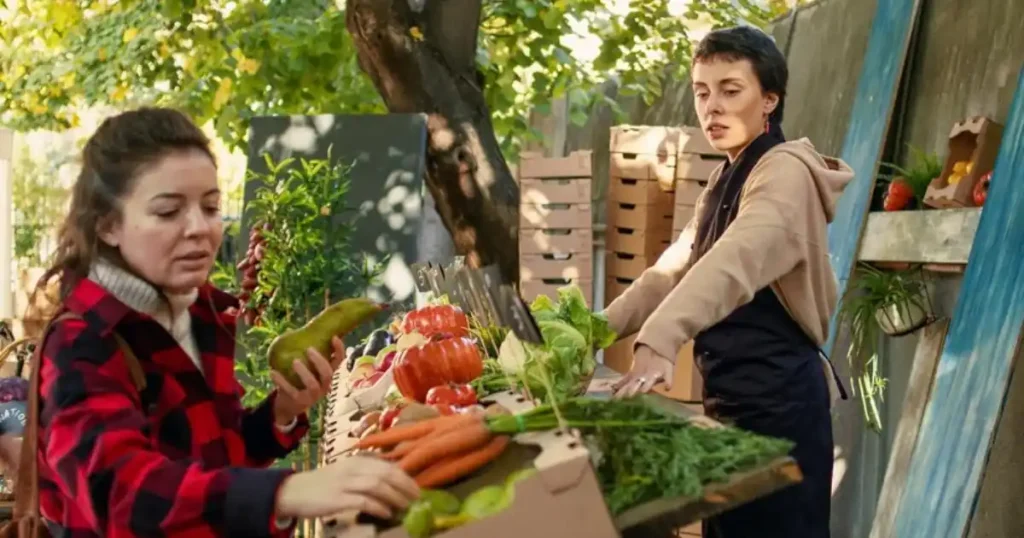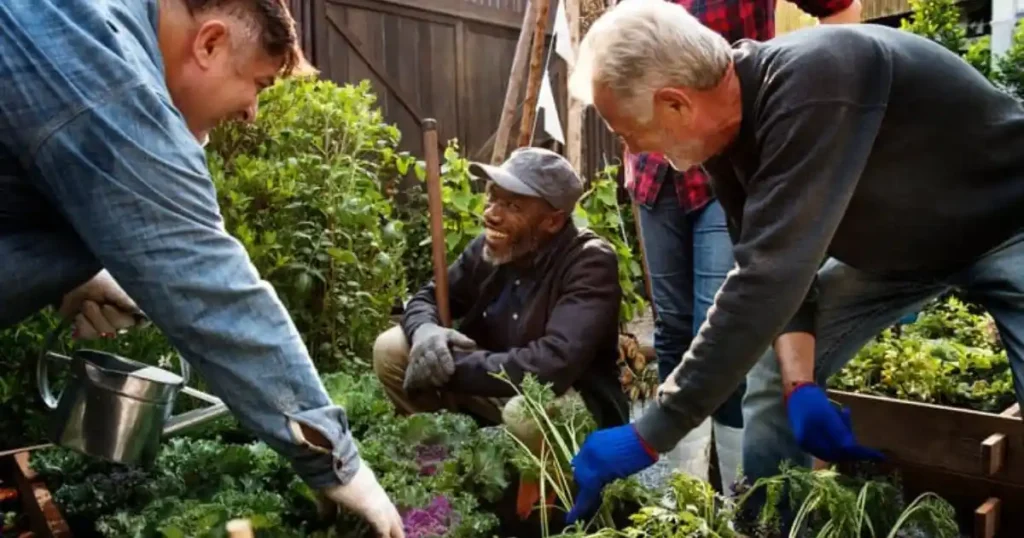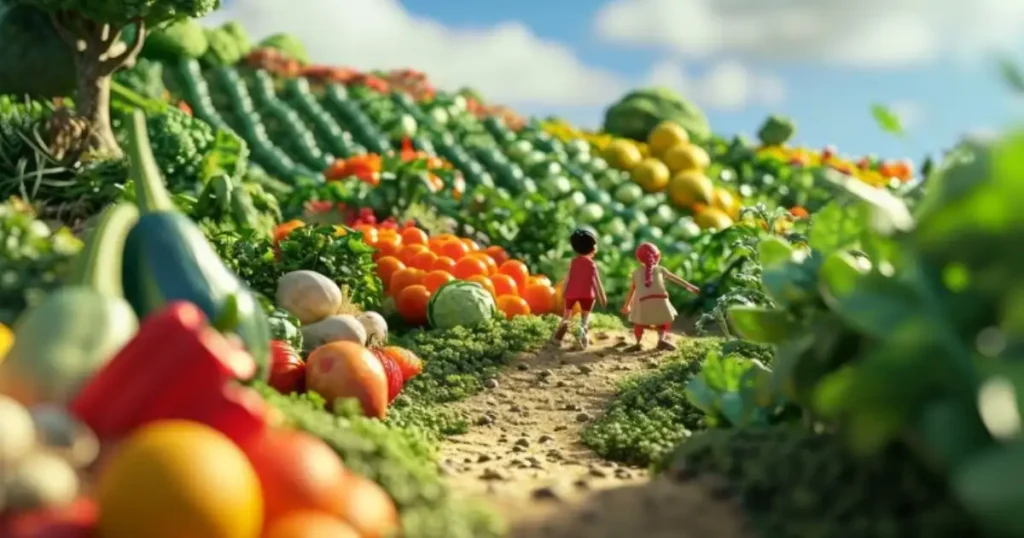Market gardening is a small-scale farming method that focuses on growing a variety of vegetables, fruits, and herbs for sale.
This approach is often practiced on small plots of land, where farmers cultivate crops intensively and sell them directly to consumers or local markets.
Understanding market gardening can empower aspiring farmers to create sustainable, profitable businesses while providing fresh produce to their communities.
Market Gardening Meaning

The clear market gardening definition is as follow:
Market Gardening Definition
Market gardening is characterized by its emphasis on producing high-value crops over a small area. Unlike larger commercial farms, market gardeners typically use sustainable practices, often focusing on organic methods. This allows them to grow diverse crops year-round, responding quickly to market demands.
Importance of Market Gardening
Market gardening plays a crucial role in local food systems. By producing fresh produce for nearby communities, market gardeners contribute to food security, reduce transportation emissions, and foster local economies. This method also promotes sustainable practices that enhance soil health and biodiversity.
Market Garden vs. Community Garden

Key Differences
While both market gardens and community gardens involve growing crops, their purposes differ significantly.
| Aspect | Market Garden | Community Garden |
|---|---|---|
| Purpose | Profit-driven | Community engagement and food access |
| Size | Typically small, intensive plots | Varies, often larger but less intensive |
| Management | Operated by one or a few individuals | Managed collectively by community members |
| Crop Variety | Diverse, focusing on market demands | Often includes staples and shared crops |
| Income Generation | Sales from produce | Limited, often non-profit |
Benefits of Each
Market gardens offer financial rewards and greater control over farming practices. Community gardens foster social connections and provide educational opportunities for participants.
Market Gardening for Beginners
Beginners tips for market gardening are:
Getting Started
For those interested in market gardening, beginning can feel overwhelming. However, breaking the process down into manageable steps can help.
- Research and Planning: Understand local market demands and potential crops.
- Site Selection: Choose a location with good soil and sunlight.
- Crop Selection: Start with easy-to-grow crops that have high demand.
- Soil Preparation: Invest in soil health through compost and organic fertilizers.
- Marketing: Build relationships with local markets, restaurants, and consumers.
Common Crops for Beginners
Many beginners find success with crops like:
- Lettuce
- Tomatoes
- Cucumbers
- Herbs (basil, cilantro)
- Radishes
Market Gardening Business Plan
The complete business plan essentials for market gardening are as follow:
Importance of a Business Plan
Creating a market gardening business plan is essential for guiding operations and securing funding. A well-structured plan helps outline your vision, objectives, and financial forecasts.
Key Components
| Section | Description |
|---|---|
| Executive Summary | Overview of the business concept |
| Market Analysis | Research on local demand and competition |
| Marketing Strategy | Plans for reaching customers |
| Operational Plan | Daily farming activities and management |
| Financial Projections | Estimated costs, revenues, and profitability |
Market Gardening Crops

Selecting the Right Crops
Choosing the right crops is vital for profitability. Factors to consider include market demand, growth cycles, and crop rotation benefits.
Popular Market Gardening Crops
| Crop | Benefits | Season |
|---|---|---|
| Tomatoes | High demand; versatile uses | Summer |
| Lettuce | Quick growth; continuous harvests | Spring/Fall |
| Peppers | Good market price; long harvest period | Summer |
| Herbs | High value; quick turnaround | Year-round |
Small-Scale Market Gardening
Small scale market gardening offers following advantages:
Advantages of Small-Scale Operations
Small-scale market gardening allows for flexibility and adaptability. Farmers can quickly respond to market trends and experiment with new crops without the financial risk associated with larger operations.
Techniques for Success
- Intensive Planting: Use methods like square foot gardening to maximize space.
- Succession Planting: Plant in intervals to ensure a continuous supply.
- Companion Planting: Use beneficial plant relationships to enhance growth.
Profitable Market Gardening

Maximizing Profitability
Profitability in market gardening hinges on efficient practices and effective marketing strategies.
Tips for Increasing Profits
- Diversify crops to attract different customer bases.
- Implement organic practices to command higher prices.
- Participate in farmers’ markets for direct sales.
Market Gardening Techniques
Some effective market gardening techniques are:
Effective Techniques for Success
Implementing effective techniques can greatly enhance yields and profits in market gardening.
Crop Rotation
Rotating crops helps prevent soil depletion and pest infestations.
Cover Crops
Using cover crops improves soil health and reduces erosion.
Integrated Pest Management
This method focuses on sustainable pest control through biological and mechanical means rather than chemicals.
Organic Market Gardening
Organic market gardening practices with the benefits are as follow:
Benefits of Organic Practices
Organic market gardening not only meets increasing consumer demand for organic produce but also supports environmental sustainability.
Organic Market Gardening Methods
- Natural Pest Control: Use beneficial insects and organic repellents.
- Composting: Recycle organic waste to enrich soil.
- Crop Diversity: Growing a variety of crops enhances soil health and reduces pest issues.
Market Gardening Tools
Essential tools for effective market gardening are:

Essential Tools for Market Gardeners
Essential tools needed in market gardening with their relevant purposes are as follow:
| Tool | Purpose | Features |
|---|---|---|
| Broadfork | Loosens and aerates soil without inverting it. | Improves soil structure, reduces compaction, minimizes soil disturbance. |
| Stirrup Hoe | Efficiently removes weeds with minimal effort. | Sharp blade cuts weeds at the soil surface, ergonomic design for comfortable use. |
| Hand Rake | Smooths soil, removes debris, and prepares seedbeds. | Lightweight and versatile, ideal for fine-tuning garden beds. |
| Garden Spade | Digging, transplanting, and edging garden beds. | Strong and durable, pointed blade for easy penetration into the soil. |
| Watering Wand | Gentle watering for seedlings and delicate plants. | Provides precise water control, prevents soil erosion and plant damage. |
Sustainable Market Gardening Practices
Small-scale farming that prioritizes environmental stewardship focuses on practices that minimize impact and maximize resource efficiency.
Water conservation is key, achieved through methods like drip irrigation and rainwater harvesting, ensuring every drop is used effectively. Soil health is nurtured through techniques like cover cropping and composting, which boost fertility and prevent erosion.
By avoiding synthetic pesticides and fertilizers, growers minimize pollution and promote a healthy ecosystem. Embracing biodiversity through diverse plantings and creating habitats for beneficial insects further enhances the sustainability of this approach to food production.
| Factor | Consideration | Examples |
|---|---|---|
| Climate | Choose crops suited to your region’s temperature, rainfall, and growing season. | – Cool climates: Kale, spinach, potatoes – Warm climates: Tomatoes, peppers, melons |
| Soil Type | Match crops to your soil’s texture, drainage, and pH level. | – Sandy soil: Carrots, sweet potatoes – Clay soil: Cabbage, broccoli |
| Market Demand | Research popular crops in your area and identify potential niche markets. | – High demand: Lettuce, tomatoes, cucumbers – Niche markets: Heirloom varieties, specialty herbs |
| Growing Season | Select crops with varying maturity times to ensure a continuous harvest. | – Short season: Radishes, spinach – Long season: Winter squash, onions |
Importance of Sustainability
Sustainable practices in market gardening not only benefit the environment but also enhance the long-term viability of farming operations.
Examples of Sustainable Practices
- Water Conservation: Implement drip irrigation systems to reduce water usage.
- Organic Soil Amendments: Use compost and green manures to improve soil health naturally.
- Biodiversity: Encourage a variety of plants and wildlife on the farm to promote ecological balance.
Market Gardening Examples
Diverse operations thrive worldwide, from urban farms supplying restaurants with microgreens and specialty vegetables to suburban plots offering CSAs (Community Supported Agriculture) with weekly produce boxes. Family-run farms often focus on seasonal vegetables and fruits sold at farmers’ markets, while others specialize in organic herbs or flowers for local florists.
Some innovative examples include hydroponic market gardens in repurposed warehouses and vertical farms maximizing space in urban settings.
These diverse examples demonstrate the adaptability and potential of market gardening to meet the growing demand for local, sustainable food.
Advantages and Disadvantages of Market Gardening
Market gardening, a system of small-scale, intensive vegetable production, offers numerous advantages such as high yields, quick returns on investment, and the ability to meet local demand for fresh, seasonal produce. This method also promotes sustainable practices like crop rotation and organic fertilization, minimizing environmental impact.
However, disadvantages include high labor intensity, dependence on favorable weather conditions, and susceptibility to pests and diseases. Market gardeners also face challenges like securing land access and competing with larger agricultural operations.
Despite these drawbacks, market gardening remains a viable and rewarding option for those passionate about producing local food.
Conclusion
Market gardening is a vital aspect of modern agriculture, offering a sustainable way to produce fresh food for local communities. By focusing on intensive cultivation and sustainable practices, market gardeners can thrive in their businesses while contributing positively to the environment and society.
Aspiring market gardeners should consider the benefits of organic methods, effective tools, and strategic planning to ensure long-term success.
As consumer interest in locally sourced and sustainably grown produce continues to rise, market gardening represents a promising opportunity for small-scale farmers.
FAQs
Some of the frequently inquired questions about market gardening are:
What is the difference between market and community gardening?
Market gardening focuses on producing crops for profit, while community gardening emphasizes collaboration and local food access.
How can beginners start garden marketing?
Beginners should research market demands, choose a suitable site, select easy-to-grow crops, and create a marketing plan.
What should be included in a market gardening business plan?
A market gardening business plan should include an executive summary, market analysis, marketing strategy, operational plan, and financial projections.
What are some popular crops for market gardening?
Popular crops include tomatoes, lettuce, peppers, and herbs due to their high demand and profitability.
What are sustainable practices in market gardening?
Sustainable practices include water conservation, organic soil amendments, and encouraging biodiversity to maintain ecological balance.
